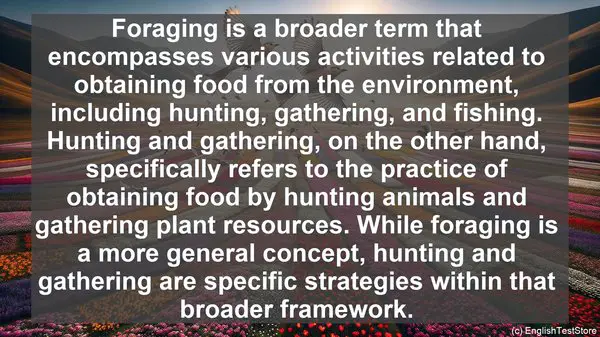Introduction
Today, we’re diving into the fascinating world of ecological anthropology. As you delve deeper into this field, you’ll encounter various terms that might seem similar but have distinct meanings. In this lesson, we’ll explore the top 10 commonly confused words in ecological anthropology, ensuring you have a solid grasp on their nuances. Let’s get started!
1. Ecosystem vs. Habitat
While both terms refer to specific environments, they differ in scale. An ecosystem encompasses all living organisms and their interactions within a particular area, including the physical environment. On the other hand, a habitat is a specific place where a particular organism or species resides within an ecosystem. Think of the ecosystem as a vast web of life, and the habitat as a smaller, localized component within it.

2. Ethnography vs. Ethnology
These terms are often used interchangeably, but they have distinct meanings. Ethnography involves immersive, on-the-ground research, where anthropologists observe and interact with a specific community to understand their culture. It’s like being in the trenches, experiencing the day-to-day life. Ethnology, on the other hand, takes a broader perspective. It involves comparative studies, looking at multiple cultures and drawing generalizations. It’s like zooming out to see the bigger picture.
3. Cultural Relativism vs. Ethnocentrism
Cultural relativism is the belief that a culture should be understood and evaluated within its own context, without imposing external judgments. It’s about appreciating the diversity of human experiences and practices. Ethnocentrism, on the other hand, is the tendency to view one’s own culture as superior or the standard against which others should be measured. It’s important for anthropologists to strive for cultural relativism, as it allows for a more objective understanding of different societies.
4. Foraging vs. Hunting and Gathering
Foraging is a broader term that encompasses various activities related to obtaining food from the environment, including hunting, gathering, and fishing. Hunting and gathering, on the other hand, specifically refers to the practice of obtaining food by hunting animals and gathering plant resources. While foraging is a more general concept, hunting and gathering are specific strategies within that broader framework.
5. Acculturation vs. Assimilation
Both acculturation and assimilation involve the cultural changes that occur when different groups come into contact. Acculturation refers to the exchange of cultural elements between groups, where both parties retain their distinct identities. It’s like a cultural give-and-take. Assimilation, on the other hand, involves one group adopting the cultural practices of another and losing their distinct identity in the process. It’s like merging into a single cultural entity.

6. Matrilineal vs. Matrilocal
These terms are often used in the context of kinship systems. Matrilineal refers to a system where descent is traced through the female line. It’s about the passing on of family names, property, and social status through the mother’s side. Matrilocal, on the other hand, refers to the post-marital residence pattern, where the couple resides with or near the wife’s family. While both terms involve the female side, they pertain to different aspects of social organization.
7. Subsistence vs. Commercial Agriculture
Subsistence agriculture is a form of farming where the primary goal is to meet the immediate needs of the farmer and their family. It’s about self-sufficiency. Commercial agriculture, on the other hand, involves farming for profit. The produce is not just for personal consumption but for sale in the market. While both forms of agriculture involve cultivation, the underlying motivations and scale differ.
8. Indigenous vs. Native
Indigenous and native are often used interchangeably, but they have subtle differences. Indigenous refers to the original inhabitants of a particular region, often with a historical connection to that place. It’s about the deep-rootedness and continuity of a people. Native, on the other hand, simply refers to being born or originating in a particular place. While both terms involve a sense of belonging, indigenous carries a stronger cultural and historical connotation.
9. Ritual vs. Ceremony
Rituals and ceremonies are both structured events that involve symbolic actions. However, they differ in their purpose and scale. A ritual is a repetitive, often smaller-scale action that carries symbolic meaning. It’s like a daily or weekly practice. A ceremony, on the other hand, is a more elaborate, one-time event, often associated with a specific occasion or transition. It’s like a grand celebration.
10. Cultural Ecology vs. Environmental Determinism
Cultural ecology is the study of how human societies interact with and adapt to their environment. It recognizes the reciprocal relationship between culture and nature. Environmental determinism, on the other hand, posits that the environment determines the course of human society and culture. While cultural ecology acknowledges the influence of the environment, it also emphasizes the agency and creativity of human communities in shaping their own destinies.
